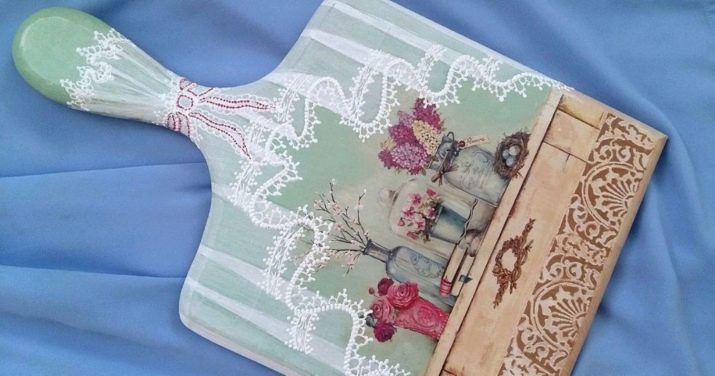DIY decoupage cutting boards
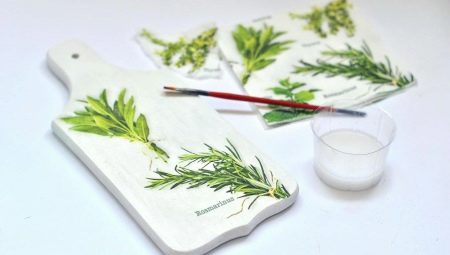
Nowadays, many designers offer tons of different ideas for inspiration for simple objects. Some people like to decorate different household items in an original step by step. This article describes how to make a beautiful decoupage of a cutting board for beginners.
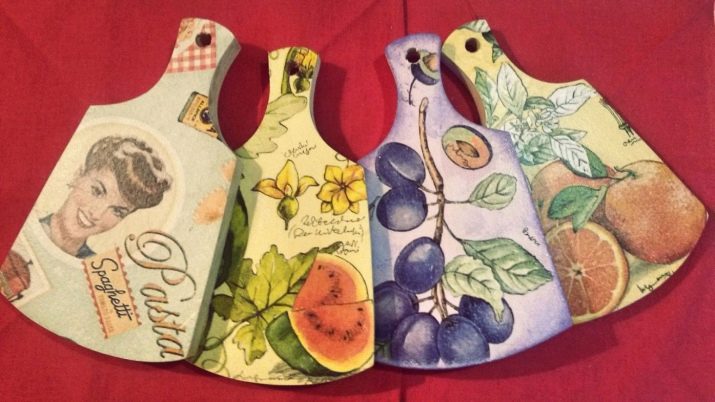

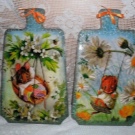
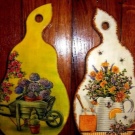
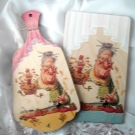

Preparation
Before embarking on a decorating project, a kitchen cutting board should be prepared. The surface of the board should be as smooth as possibleso her pre-sanded with sandpaper.
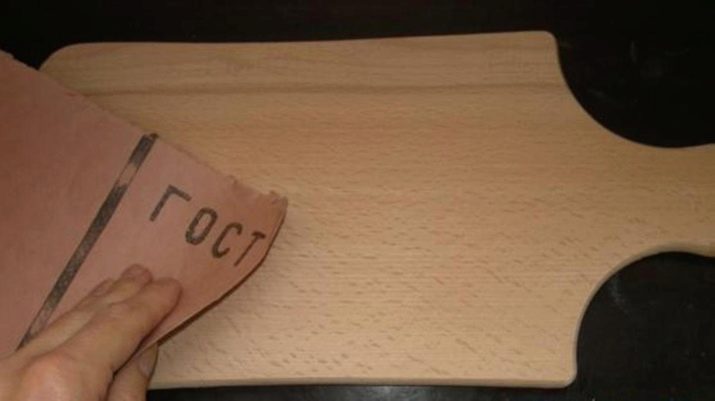
It is also necessary to remove all fine dust and dirt from the item, if it is not already new. Later, it is treated with a special primer, which should even get into the grooves between the wood fibers.
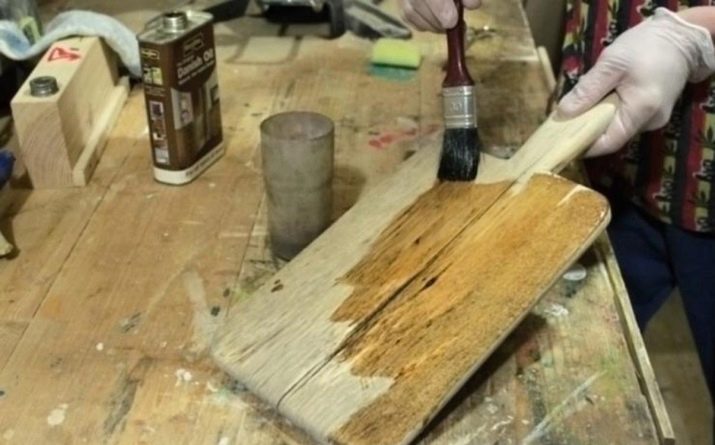
Materials and tools
Before starting the design, you need to prepare some things. A list of them is presented below.
- Board.
- Scissors - they cut out the drawing, so it is better to use the manicure option.
- Sponge or sponge - it is convenient to apply paint to the object with such material.
- Thin brush - it is more convenient to apply the glue mass with this tool.
- Sandpaper. It is designed to make the surface of the object smooth, remove all roughness.
- Clear acrylic varnish... It performs a protective function - it does not allow the image to be erased on the board.
- Artistic acrylic paints... Such materials will be able to hold out on the product in their original form for a long time.
- Stencil... With it, you can make a picture on an object. Sometimes a napkin with a picture you like is used.
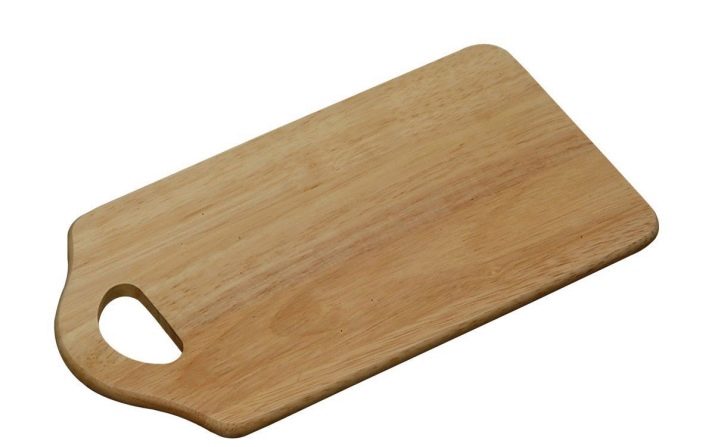
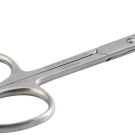
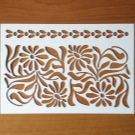
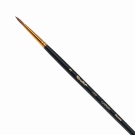
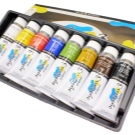
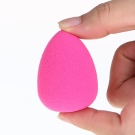
Interesting options
Today there are a huge number of master class instructions on how to decorate a cutting board for the kitchen with your own hands:
- decoration with napkins;
- decoupage with a printed picture;
- decorating a product in vintage style;
- shabby chic design;
- decoupage in the style of Provence;
- decorating with eggshells;
- a board decorated with a veil.
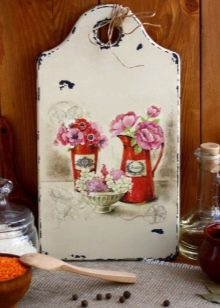
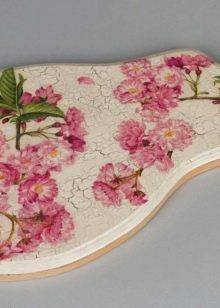
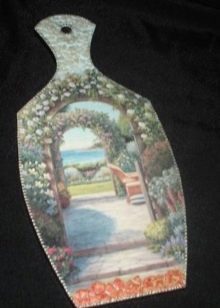
Napkin decoration
First of all, you need to choose a napkin with a suitable pattern (stencils with apples, pears, grapes are most often used). It should be as thin as possible so that the image can be transferred to the board. It is cut out with scissors.
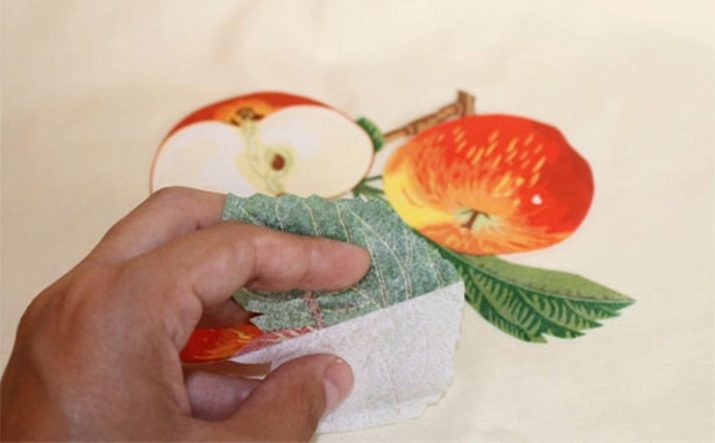
The place on the board where the drawing will be located, need to be primed well... To do this, first, a stencil of a picture is made on the product with a pencil. Then the inner part of the resulting contour must be filled with a primer.
It is necessary to wait until the primer is dry, after which you should separate the two lower layers of the napkin without a pattern and prepare only the top layer. At the same time, you need to apply a soil composition to the product with a brush.
When the soil dries up a little, it is recommended to take the top of the napkin and carefully glue it to the board, while on the product a composition of PVA glue and a small amount of water is preliminarily applied.
After the drawing is glued, it is recommended to fix the result with a special varnish. You can apply it with foam rubber or a sponge.
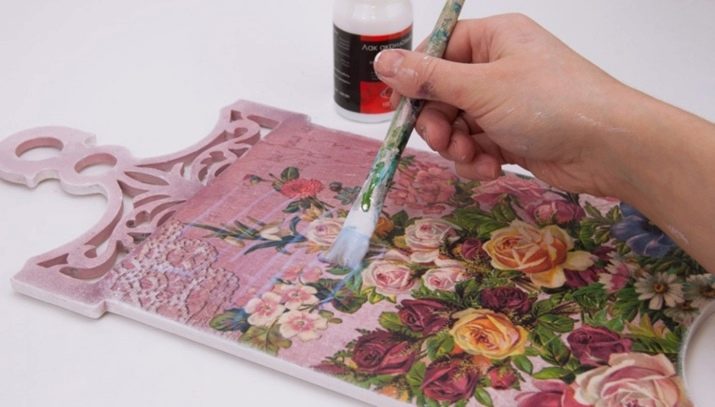
You will learn more about how to decoupage a cutting board using napkins in the following video.
Decoupage with a printed picture
First of all, you need to burn the cutting board in a circular direction using a gas soldering iron. The middle must remain intact, because this is the part where the image will be applied.
After firing with an iron brush, you need to clean out all the resulting fumes. Then the product is thoroughly wiped with a damp cloth. Its middle is covered with a special artistic primer. Its layer should have a slightly transparent shade.
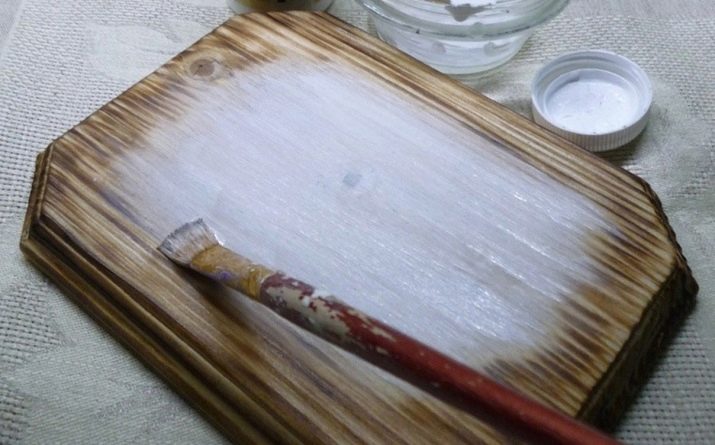
At the same time, you need to dilute a small amount of white acrylic paint with water. The resulting composition covers the part that was fired. This technique will fill in the grooves.
The paint should dry out a little - only after that you should add a little more white to the middle. Then you can start drawing the selected picture.
For this, the board is covered with a thin layer of acrylic varnish. Then an image is taken (you need to cut out the drawing with a small indent), and a colorless varnish is applied to it. Without waiting for it to dry, the picture is glued to the middle of the product.
The glued pattern is gently smoothed out with your fingers. A file and a napkin are superimposed on top of it. In a circular motion, the excess amount of acrylic varnish is removed.
The board should be left to dry for several hours. After that, the paper is dampened with a wet cloth. It follows roll up gradually.
The picture itself should remain on the product. From above it can be covered with matte varnish in 3-4 layers. At the end, the finished item dries well again.
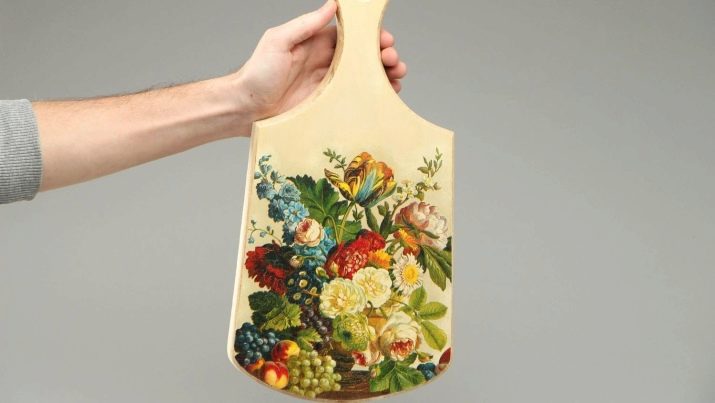
Decorating a product in vintage style
Sand the board with sandpaper. The resulting dust can be removed with a damp cloth. The product should feel smooth to the touch.
One side of the board should be primed.
This procedure should be carried out in two layers with intermediate drying (you can also dry it with a hairdryer).
You must first do a solution of a small amount of water and PVA glue.
The resulting mixture should be applied to the board, and a vintage-style drawing should be glued on top. In the process, the image is slightly smoothed with your fingers to prevent bubbles from forming. All this is covered with a protective varnish and sent to dry.
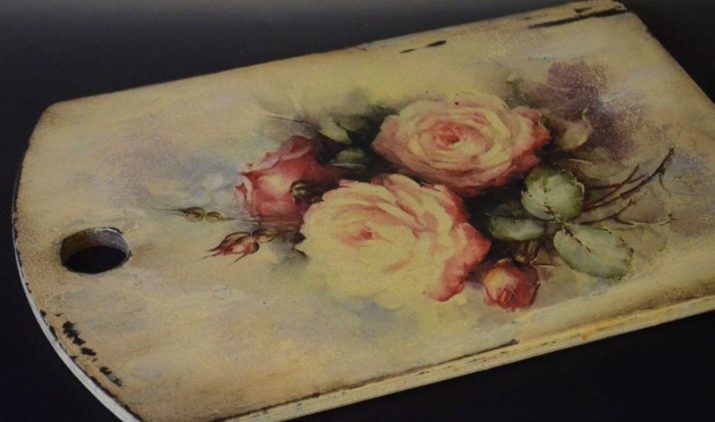
Shabby chic decor
First of all, the cutting board must be primed and then painted over.After drying, you need to apply paraffin to it in those places where there should be scuffs. You can use craquelure instead.
Later, the board is again coated with decorative paint. When it dries, the surface is lightly sanded to create abrasions.
After the background is finished, you need to start applying the image itself. To do this, you need to choose a napkin with a suitable pattern, after which it must be glued to the middle of the product on the glue solution and smoothed with your hands.
All this is dried within a few hours. The finished board should be once again covered with a special protective varnish, and then sent to dry for several hours.
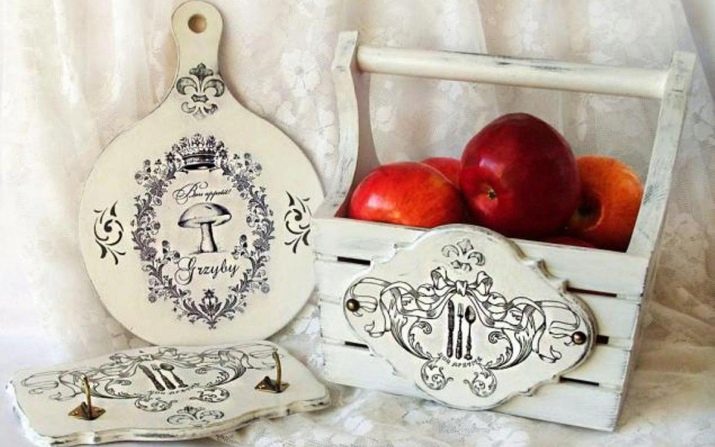
Decoupage in Provence style
The board is sanded with sandpaper. Acrylic primer is applied to it, after which you need to let it dry. The item is varnished. At the same time, you need to choose a suitable image in the Provencal style.
If the design is on a napkin, it can be torn off slightly to create a jagged edge effect.
The top layer is separated from the other two and glued to the board using a solution with PVA glue and water.
Another layer of varnish is applied to the item. Parts that do not have a pattern are decorated with various paints using a sponge or sponge. - this technique will make the picture stand out. All this is again covered with a protective layer and sent to dry.
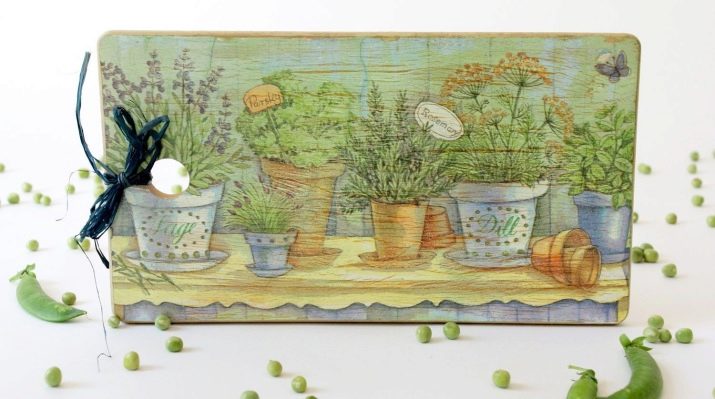
Decorating with eggshells
First of all, you need to prepare the shell. It is cleaned of protein, yolk and film, washed thoroughly and sent to dry. Later, one of the edges of the board is greased with glue solution. The shell is glued to this place. This is done in a chaotic manner.
The same should be done with the rest of the edges of the object. At the same time, you need to choose a napkin with a beautiful matching pattern or just print a new image.
The middle of the board should be slightly greased with PVA glue diluted with water. The picture is neatly glued to this place. From above, it is again coated with a mixture.
You can paint eggshells with acrylic-based paints to make the product look more interesting and bright. Then all this is covered with a colorless protective varnish and dried.
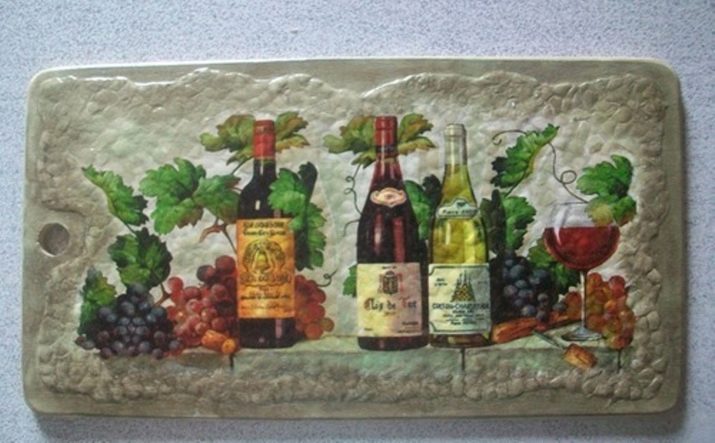
Veil-adorned board
Most often, only imitation of a veil is depicted on cutting boards. To do this, you can first draw it on paper and cut it out - such an element can be used as a stencil. You can draw a border with an outline.
At the same time, in a separate container, you need to mix white acrylic paint and water. The mixture should have a light transparent tone. With the resulting composition, it is necessary to cover the part of the board where the veil should be. You need to do this with quick jerky movements using a wide brush, one layer is enough.
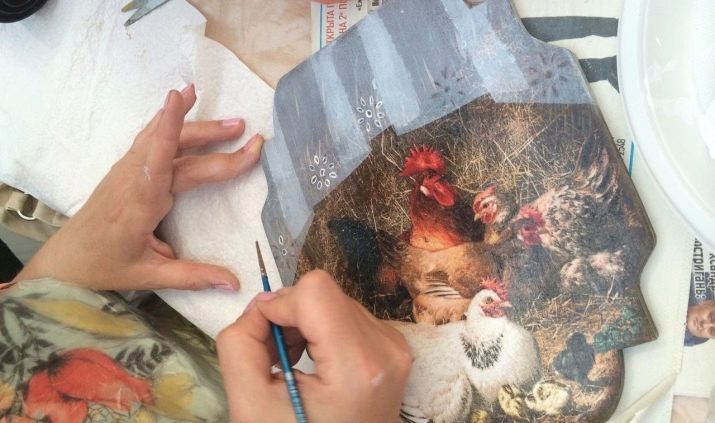
Remove any excess paint with a cotton swab and a damp cloth. Then you need to draw thin lines from the folds of the future veil upwards.
This line is drawn using a ruler. In the process of work, it needs to be shaded a little, otherwise too clear boundaries can ruin the drawing.
When drawing lines the paint should be thicker with a rich white color. To fill in the folds of the painted veil, you need to reapply the paint, making the shade richer and more pronounced. If you add a little light gray coating along the length of the lines, then you can get additional volume.
The edge of the veil needs to be contoured. It can be executed as a solid line or in the form of dots of different sizes located along the entire length of the edge. As a result, everything is fixed with a protective colorless application.
